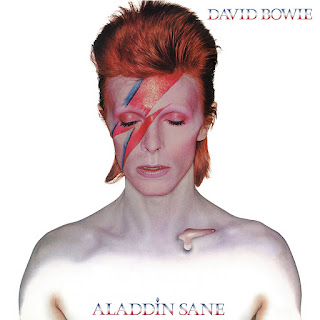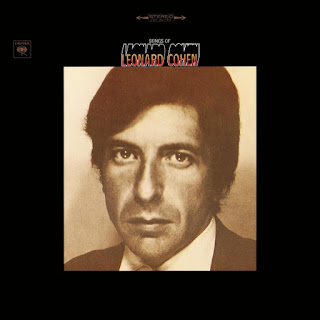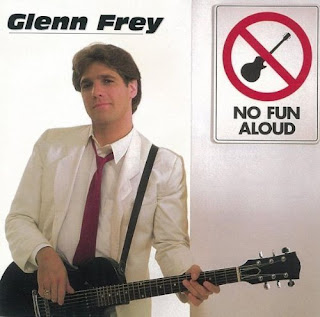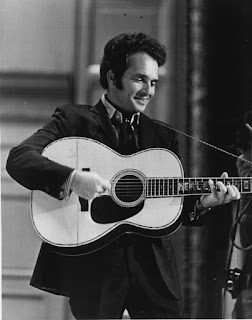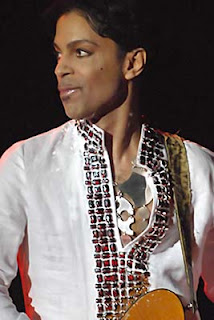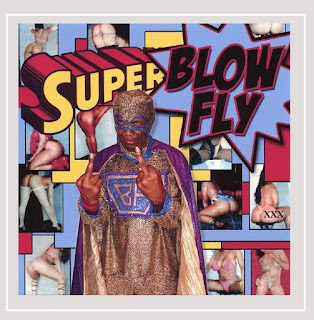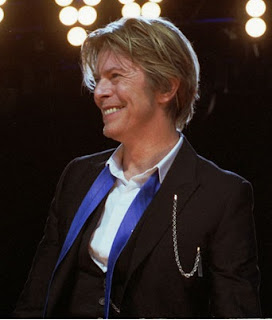 |
| David Bowie photo by Adam Bielawski/Photobra |
Part Two: Georgio Gomelsky to Alphonse Mouzon
Part Three: Prince to Bernie Worrell
Mose Allison (89)
American jazz and blues pianist Mose Allison was also a gifted songwriter who penned such classics as “Parchman Farm” and “A Young Man’s Blues.” During the 1950s Allison worked in New York City as a jazz pianist, performing and recording with legends like Stan Getz, Al Cohn, and Zoot Sims. As Allison began incorporating more blues into his music, he would straddle both worlds and appeal to fans of both jazz and blues genres. As a songwriter, Allison’s songs have been recorded by artists as diverse as the Who, John Mayall’s Bluesbreakers, Leon Russell, Bonnie Raitt, Van Morrison, and the Clash and his musical influence reached such unlikely fans as Jimi Hendrix, the Rolling Stones, and Georgie Fame, among others.
Signe Anderson (74)
Anderson was the original vocalist for the San Francisco-based band Jefferson Airplane. Born Signe Toly, she was a well-respected jazz and folk singer when she married Jerry Anderson, one of Ken Kesey’s Merry Pranksters. Asked by singer/songwriter Marty Balin to join Jefferson Airplane, Anderson would sing on the band’s 1966 debut album, Jefferson Airplane Takes Off. Anderson quit the band later that year, performing her final shows with the Airplane in October. Moving to Oregon, Anderson continued to sing through the years with various bands, including Carl Smith and the Natural Gas Company. Anderson died on the same day as her former Jefferson Airplane bandmate Paul Kantner.
 |
| Jimmy Bain photo by Dana Wullenwaber |
An underrated musician who contributed to the work of many better-known artists, Scotland’s Jimmy Bain is best known as an integral member of the classic rock bands Rainbow and Dio. Bain first came to prominence with the London-based band Harlot, where he came to the attention of Deep Purple’s Ritchie Blackmore, who was looking for a new bass player for his band Rainbow. Bain performed on the band’s 1976 album Rising and would appear on the following year’s On Stage live album. Fired from Rainbow, Bain formed Wild Horses with former Thin Lizzy guitarist Brian Robertson, the bassist singing and writing material for the band’s two EMI label records at the dawn of the ‘80s.
Close friends with Thin Lizzy’s Phil Lynott, Bain played keyboards and co-wrote songs for Lynott’s two solo albums, 1980’s Solo In Soho and 1981’s The Phillip Lynott Album. During this period Bain also performed on albums by Roger Chapman (Family), Roy Harper, Gary Moore, and Kate Bush before reuniting with former Rainbow vocalist Ronnie James Dio in his new band Dio. Bain wrote or co-wrote several songs during his tenure with Dio, performing on the band’s Holy Diver (1983), The Last In Line (1984), Sacred Heart (1985), and Dream Evil (1987) albums.
After leaving Dio, Bain was a member of a number of bands, including World War III (with vocalist Mandy Lion), the Hollywood All Starz, and 3 Legged Dog, the latter two with former Dio drummer Vinny Appice. Bain later formed Last In Line in 2013 with former Dio bandmates Appice and guitarist Viv Campbell, performing classic Dio songs. Bain died while on Def Leppard’s “Hysteria on the High Seas” cruise with Last In Line, his death originally attributed to a lengthy bout with pneumonia but actually the result of undiagnosed lung cancer.
John Berry (52)
John Berry was the original guitarist for the Beastie Boys in their earliest incarnation as a hardcore punk band. Along with singer Michael Diamond (a/k/a “Mike D”), bassist Adam Yauch (a/ka/ “MCA”), and drummer Kate Schellenbach (later of Luscious Jackson), Berry recorded the acclaimed 1981 EP Polly Wog Stew, the Beastie Boys opening for bands like the Dead Kennedys, the Misfits, and Bad Brains. Berry left the Beastie Boys in 1982 before the band’s stylistic jump to hip-hop, the guitarist subsequently playing with outfits like Thwig, Big Fat Love, and Bourbon Deluxe.
David Bowie (69)
Rock legend David Bowie should need no introduction. The British musician, actor, and painter was born David Jones, changing his name in 1967 after being confused with the British lead singer of American band the Monkees. Bowie released his self-titled debut album the same year, a collection of pop and music hall songs that failed to chart. Always the chameleon, Bowie’s 1969 sophomore album – alternately titled David Bowie in the U.K. and Man of Words/Man of Music in the U.S. (and later reissued as Space Oddity by RCA Records in 1972) – featured an inspired mix of folk, rock, and prog rock that was both ahead of and out of time, but nonetheless scored a Top 5 U.K. hit in the song “Space Oddity.” Reissued at the height of Bowie’s 1970s-era glam-rock fame, Space Oddity the album would chart Top 20 on both sides of the pond.
After a releasing a pair of albums that would make him a star in the U.K. in 1970’s The Man Who Sold The World and 1971’s Hunky Dory, Bowie’s stateside breakthrough came with the 1972 release of The Rise and Fall of Ziggy Stardust and the Spiders From Mars, which found a receptive audience on FM radio and critical acclaim from rock music magazines. Bowie’s 1973 album Aladdin Sane would hit number one in the U.K. and chart Top 20 in the U.S. while the following year’s Diamond Dogs would top the U.K. charts and hit number five in the U.S. Moving away from his glam-rock persona, Bowie seemingly changed his musical direction with each new album, yet still found commercial success with disparate efforts like 1975’s Young Americans, 1976’s Station To Station, and 1977’s Low.
The 1981 launch of MTV allowed Bowie to bring a visual aspect to his art, his first album of the MTV era – 1983’s Let’s Dance – scoring hit singles with the title track and the song’s “China Girl” and “Modern Love,” all of which prominently featured accompanying music videos. The album also introduced guitarist Stevie Ray Vaughan to the world stage, but its enormous commercial success negatively impacted Bowie’s creativity, and after his next two albums were slagged by critics, Bowie formed the band Tin Machine with guitarist Reeves Gabrels and the Sales brothers, Hunt and Tony, the band releasing albums in 1989 and 1991.
Bowie continued to tour and record throughout the 1990s and early 2000s, albums like 1997’s Earthling, 1999’s Hours, and 2002’s Heathen experiencing consistent commercial success. Bowie went on an extended hiatus from recording after the release of his 2003 album Reality, reappearing in 2013 with The Next Day, which quickly shot to number one on the charts in the U.K. and number two in the U.S. Bowie’s final album, Blackstar, was released on his birthday in January 2016 and instantly met with critical acclaim. Written and recorded while the artist was terminally ill with liver cancer, the album’s lyrics show Bowie struggling with his mortality, the album planned as both his swan song and a parting gift for his fans; after working throughout the span of his illness, Bowie passed away two days after his birthday. Inducted into the Rock & Roll Hall of Fame in 1996, David Bowie was one of those unique artists who retaining artistic integrity throughout a lengthy career while remaining one of the best-selling rock ‘n’ roll artists of all time.
Pete Burns (57)
Peter Jozzeppi “Pete” Burns was a British singer/songwriter and TV personality best known as singer for the band Dead or Alive, which scored a major hit with their 1985 song “You Spin Me Round (Like A Record)” from the album Youthquake. Burns recorded a total of seven albums with the band between 1984 and 2000 with varying commercial returns. Burns continued to record sporadically throughout the 2000s, but he found greater fame as a U.K. reality show celebrity, appearing on the TV shows Celebrity Big Brother 4 and Celebrity Wife Swap. Sexually fluid, the androgynous Burns was notably married to both a woman and a man during his time in the spotlight, and underwent extensive cosmetic surgery to modify his appearance, which led to subsequent health problems. Burns published his autobiography, Freak Unique, in 2006.
Cecil Bustamente Campbell a/k/a Prince Buster (78)
Prince Buster was a Jamaican singer, songwriter, and producer responsible for some of the most important records of the 1960s that would influence a generation of Jamaican artists including Bob Marley, Jimmy Cliff, and Peter Tosh. Campbell came up through the Jamaican sound system culture of the 1950s, and released his first single in 1961. He recorded prolifically throughout the decade under the Prince Buster name, scoring a hit in far-away England with the 1967 release “Al Kapone.” Although Campbell virtually retired from the music business during the ‘70s and moved to Miami, his music influenced the post-punk U.K. ska revival and British “2-Tone” bands like Madness and the Specials recorded covers of Campbell’s songs. Campbell returned to performing in the late ‘80s, using the Skatalites as his backing band, and he returned to the studio in 1992, and would have his second U.K. hit with his song “Whine and Grine,” which had been used in a Levi’s commercial. Campbell was awarded the Order of Distinction by the Jamaican government in 2001 for his musical achievements, and made several festival appearances throughout the 2000s, including the 40th Montreux Jazz Festival and the 2007 U.K. Rhythm Festival.
Phil Chess (95)
Born Fiszel Czyż in a Jewish community in Poland, the family immigrated to the United States and Chicago in 1928, changing the family name to Chess. Along with his brother Leonard (née Lejzor), the brothers would forever influence music around the world. During the late 1940s, Phil and Leonard were running the popular Chicago club the Macomba Lounge when Leonard became a partner in the local Aristocrat Records label. Phil joined the company in 1950, which subsequently changed its name to Chess Records and changed the label’s focus to blues and R&B, signing future legends like Muddy Waters, Howlin’ Wolf, Sonny Boy Williamson, Etta James, Willie Dixon, Bo Diddley, and Chuck Berry, among many others. Chess Records was directly responsible for some of the most influential records of the 1950s and ‘60s, inspiring artists both stateside and in England like the Beatles, the Rolling Stones, Eric Clapton and the Yardbirds, and many more. Phil was involved in production of many of the label’s records until the label was sold to General Recorded Tape (GRT) in 1968, and Phil retired to Arizona in 1972 after his brother’s death. Both Phil and Leonard Chess were inducted into the Blues Hall of Fame as non-performers in 1995.
Guy Clark (74)
Born in Texas but immigrating to Nashville in the 1970s, singer/songwriter Guy Clark forever had one foot in both worlds, that of commercial country music and that of gritty, raw-boned Americana. During a lengthy career that was launched with the 1975 release of his critically-acclaimed album Old No. 1, Clark released better than a dozen studio and live albums, experiencing modest commercial success. Clark enjoyed a well-deserved reputation as one of the best songwriters in American music, and artists as diverse as Johnny Cash, Jerry Jeff Walker, Bobby Bare, Jimmy Buffet, Vince Gill, and Emmylou Harris recorded Clark songs like “Desperados Waiting For A Train,” “Oklahoma Borderline,” “L.A. Freeway,” and “Heartbroke.” Clark’s sound was a hybrid of country, blues, and folk music similar to that of his friend and fellow songwriter Townes Van Zandt, who Clark often cited as an influence on his own songwriting. In return, Clark mentored artists like Steve Earle and Rodney Crowell, helping both launch their respective careers. Clark won a Grammy™ Award for “Best Folk Album” for his 2014 release My Favorite Picture of You.
Otis Clay (73)
American soul giant Otis Clay got his start in the church singing gospel music, but began performing secular R&B during the mid-1960s. Signing with an independent label in Chicago, Clay’s first hit came with the gospel-influenced “That’s How It Is (When You’re In Love),” which hit #34 on the R&B charts, following that single with “A Lasting Love,” which rose to #48 on the R&B charts. His contract was purchased by Atlantic Records, who released Clay’s soul-infused cover of the Sir Douglas Quintet’s “She’s About A Mover,” which became Clay’s biggest pop hit, inching onto Billboard’s “Hot 100” chart. Clay moved to the legendary Hi Records label in Memphis in 1971, where he would record many of his best-known soul-blues sides.
Clay’s biggest hit with Hi came in 1972 with the classic “Trying To Live My Life Without You,” which would later be covered by rocker Bob Seger. Other R&B chart hits would follow for various labels, including “If I Could Reach Out,” “All Because of Your Love,” and “The Only Way Is Up.” Clay’s commercial presence dwindled during the 1980s, but he remained a popular live performer in Europe, Japan, and the southern U.S. and he continued to record and perform until his death. The longtime Chicago resident and community activist released his final album, 2015’s Soul Brothers – a collaboration with fellow “chitlin’ circuit” veteran Johnny Rawls – which earned the duo a Blues Blast Award for “Soul Album of the Year.” Clay was inducted into the Blues Hall of Fame in 2013.
Leonard Cohen (82)
Canadian-born Leonard Cohen was an influential singer, songwriter, poet, novelist, and painter whose intellectual song lyrics frequently delved deeply into relationships, religion, politics, and alienation. Cohen originally attempted a career as a poet and novelist during the late 1950s and early ‘60s with disappointing results. Changing his focus to folk music, Cohen was 33 years old before he recorded his first album after coming to the attention of legendary label A&R man John Hammond. Songs of Leonard Cohen, released in 1967, included the enduring song “Suzanne” and while achieving only modest commercial success stateside, the album became a big hit in the U.K. and across Europe. Several more albums of folk-rock songs would follow, 1969’s Songs From A Room, 1971’s Songs of Love and Hate, and 1974’s New Skin For The Old Ceremony all enjoying hit status in the U.K. while they were barely noticed in the U.S.
Cohen would broaden his style in the late ‘70s, and the artist would embellish his unique sparse performances with backing vocals and synthesizers on ‘80s-era albums like1984’s Various Positions and 1988’s I’m Your Man (one of only two Cohen albums during the decade), the latter of which would become his best-selling album worldwide while the former yielded what is possibly Cohen’s best-known song in “Hallelujah.” Covered by John Cale in 1991, the song was subsequently covered by singer Jeff Buckley for his multi-platinum debut album Grace. Buckley’s version of “Hallelujah” would be used in a number of movies and TV shows, increasing its popularity, and it has since been covered by almost 200 artists in various languages.
Cohen only released a single album during the ‘90s – 1992’s underrated The Future – and he spent most of the decade away from music, including five years of seclusion at the Mt. Baldy Zen Center near Los Angeles, where he would be ordained as a Buddhist monk. Cohen returned to music in 2001 with his tenth album, Ten New Songs, which was co-written and produced with singer Sharon Robinson. Dear Heather followed in 2004, after which Cohen underwent another hiatus. Cohen spent much of the rest of the decade in semi-retirement until his daughter discovered that his former manager had misappropriated over $5 million from Cohen’s savings.
The singer hit the road in 2008 for his first tour in fifteen years and quickly found a new audience among sincerity-starved young music fans. Cohen subsequently released three acclaimed studio albums during the final years of his life: 2012’s Old Ideas, 2014’s Popular Problems, and 2016’s You Want It Darker, a brilliant, haunting recording released three weeks before Cohen’s death. All three brought the talented singer/songwriter newfound commercial success in the U.S. and quickly shot to #1 on the charts in his Canadian homeland. Cohen was inducted into the Canadian Music Hall of Fame in 1991 and the Rock & Roll Hall of Fame in 2008, and received a Grammy™ Lifetime Achievement Award in 2010.
Jerry Corbetta (68)
Singer, songwriter, and keyboardist Jerry Corbetta is best-known as the frontman for American rock ‘n’ roll band Sugarloaf, which enjoyed a major hit in 1970 with the song “Green-Eyed Lady,” which was co-written by Corbetta. The musician began his career playing drums and keyboards with numerous Denver area bands, forming the band Chocolate Hair in 1968 with guitarist Bob Webber. Changing their name to Sugarloaf, the band signed with Liberty Records, releasing their self-titled 1970 debut album, which included “Green-Eyed Lady” Sugarloaf would later score another Top Ten hit “Don’t Call Us, We’ll Call You” in 1974. Sugarloaf broke up in 1978 after a handful of albums, and Corbetta joined Frankie Valli and the Four Seasons as their musical director, remaining with the band through 1984. Attempts to resurrect Sugarloaf were largely unsuccessful, and in 1992 Corbetta formed the nostalgia act The Classic Rock All Stars with guitarist Mike Pinera (Blues Image, Iron Butterfly) and members of Rare Earth and Cannibal & the Headhunters. Diagnosed with the neurologic disorder Pick’s disease in 2009, Corbetta retired from performing, and he died from the disease in a Denver hospice in September 2016.
Clifford Curry (79)
A pioneer of the regional R&B sub-genre widely known as “beach music,” talented singer Clifford Curry recorded his first sides as “Sweet Clifford” for the Nashville-based Excello Records label during the mid-1960s. Curry scored a hit in 1967 with “She Shot A Hole In My Soul,” written by Mac Gayden, but subsequent releases for various labels found little chart success. Always a popular live performer, especially in the Carolinas where beach music was enormously popular, Curry stayed out of the recording studio from 1969 until signing with Buddah Records in 1977 for two singles, “Body Shop” and “Moving In Circles.” Curry recorded the popular “Shag With Me” and “Let’s Have A Party” in 1980, and he continued to record and perform throughout the 1980s and ‘90s. During the 1990s Curry formed a short-lived soul group known as Legends with fellow soul singers Archie Bell and Maurice Williams.
Robert Edwards (74)
Robert “Big Sonny” Edwards was an original member of the Intruders, an American soul group popular during the late 1960s and early ‘70s and one of the first to enjoy hits working with producers Kenny Gamble and Leon Huff. One of the most influential “Philly soul” outfits, the Intruders scored 24 R&B chart hits, and placed 14 songs on the Billboard magazine “Hot 100” chart, including their million-selling 1968 Top 10 hit “Cowboys to Girls.” Edwards quit the band in 1975 after becoming a Jehovah’s Witness, and retired from the music industry.
Keith Emerson (71)
British keyboard wizard Keith Emerson, along with contemporaries like Rick Wright of Pink Floyd, Rick Wakeman of Yes, and Jon Lord of Deep Purple, is credited with popularizing the use of keyboards in rock music. First coming to prominence as a member of the Nice during the late ‘60s, Emerson’s raging Hammond organ sound dominated the band’s classical music-inspired sound on albums like 1967’s The Thoughts of Emerlist Davjack and the following year’s Ars Longa Vita Brevis. After the break-up of the Nice in 1970, Emerson formed progressive rock legends Emerson, Lake & Palmer with British rock veterans Greg Lake (King Crimson) and Carl Palmer (Atomic Rooster).
It is Emerson’s work with ELP for which he is best-known, the supergroup releasing its self-titled debut album in 1970 and immediately scoring a hit with the Greg Lake song “Lucky Man.” Much as it did with the Nice, Emerson’s keyboards and groundbreaking Moog synthesizer playing defined the ELP sound, and albums like 1971’s Tarkus and 1973’s Trilogy were enormously successful and accompanied by tours featuring Emerson’s flamboyant performances. When ELP broke up in 1979, Emerson pursued a solo career with little success, his 1981 debut album, Honky – which included calypso and reggae songs – was largely ignored everywhere except Italy, where it found an appreciate audience. The talented musician found greater acclaim as a composer of movie soundtracks, Emerson contributing to the scores of Dario Argento’s Inferno, Sylvester Stallone’s Nighthawks, and Lucio Fulci’s Murder Rock.
During the 1980s, Emerson also formed the short-lived outfit Emerson, Lake & Powell with former Rainbow drummer Cozy Powell, the band releasing a self-titled 1986 album, and the AOR band 3 with Palmer and American multi-instrumentalist Robert Berry, which released a single album in 1988. ELP reunited for 1992’s Black Moon and 1994’s In The Hot Seat albums, touring in support of both before breaking up again by the end of the decade. Emerson toured with his own band during the 2000s, reunited with the Nice for a 2002 tour, joined with Greg Lake for a 2010 tour, and performed with the full band for a one-time show in London to celebrate ELP’s 40th anniversary.
Emerson released his final album, The Three Fates Project, in 2012 but health issues sidelined the keyboardist and prevented touring. Suffering from depression and having developed nerve damage that impacted his playing, Emerson committed suicide in March 2016.
Glenn Frey (67)
Singer, songwriter, and actor Glenn Frey was a founding member of country-rockers the Eagles, where he shared vocals with Don Henley, with whom he also wrote many of the band’s songs. It’s Frey’s vocals you’ll hear on Eagles’ hits like “Peaceful Easy Feeling,” “Take It Easy,” “New Kid In Town,” and “Heartache Tonight.” Frey and Henley were originally members of singer Linda Ronstadt’s backing band before forming the Eagles in 1971, the band achieving enormous success, scoring six chart-topping albums and earning six Grammy™ Awards and becoming one of the best-selling acts of the 1970s before breaking up in 1980.
Frey launched a successful career as a solo artist with the 1982 release of his debut album No Fun Aloud. Throughout the decade, Frey scored several Top 40 hits like “The Heat Is On,” “You Belong To The City,” “True Love,” and “Smuggler’s Blues.” Frey also dabbled in acting, appearing in ‘80s-era TV shows like Miami Vice, Wiseguy, and Nash Bridges as well as films like Cameron Crowe’s Jerry McGuire. The Eagles reunited in 1994 for a new album, Hell Freezes Over, followed by a successful tour; the band released the multi-Platinum album Long Road Out of Eden in 2007, and Frey released his final solo album, After Hours, in 2012. Frey was inducted into the Rock & Roll Hall of Fame as a member of the Eagles in 1998.
Rudy Van Gelder (91)
Legendary jazz producer and recording engineer Rudy Van Gelder is widely considered one of the most important non-performers in the history of the genre. An independent engineer and producer with his own studio, Van Gelder worked with a number of record labels throughout the 1950s and ‘60s, including Blue Note and Verve, but he’s credited with playing an integral role in the success of the Prestige Records label. Throughout his storied career, Van Gelder recorded artists like Miles Davis, John Coltrane, Sonny Rollins, Wayne Shorter, Thelonious Monk, and Horace Silver, among others, and he helped shape such classic jazz recordings as Coltrane’s A Love Supreme, Davis’s Walkin’, Herbie Hancock’s Maiden Voyage, and Silver’s Song For My Father.
Charles Goering a/k/a Barrelhouse Chuck (58)
Critically-acclaimed Chicago blues piano-pounder known professionally as Barrelhouse Chuck, Goering trained under legendary pianists Pinetop Perkins and Sunnyland Slim. Throughout a career that spanned some 30 years, Goering performed and recorded with a veritable “who’s who” of blues giants, including Jimmy Rogers, Eddie Taylor, Hubert Sumlin, Otis Rush, Buddy Guy, Big Smokey Smothers, and Kim Wilson of the Fabulous Thunderbirds, among others.
Gib Guilbeau (78)
Fiddle player Gib Guilbeau was a member of Swampwater, which was originally Linda Ronstadt’s backing band after the Stone Poneys broke up but would go on to make two brilliant albums of Cajun-flavored rock ‘n’ roll. In 1974, Guilbeau later joined original members Chris Ethridge and Sneaky Pete Kleinow in forming a new version of the Flying Burrito Brothers, recording the band’s ‘comeback’ album Flying Again. Guilbeau stayed through the mid-‘80s in varying versions of the Burritos. Guilbeau found some success as a songwriter, his material covered by artists like Ricky Nelson, Rod Stewart, and Ronnie Wood.
Jimmy Guterman (53)
Writer Jimmy Guterman was a casual acquaintance of mine, the two of us bonding over our shared love of Jason & the Scorchers. We’d corresponded infrequently, and I had lost touch with him in the years before his (premature) death. For those unfamiliar with Guterman, he was a talented and passionate writer about rock music during the 1980s and ‘90s, contributing to publications like the Boston Phoenix, Rolling Stone, CD Review, and New Country. Guterman published five books, including bios of Jerry Lee Lewis, Sinead O’Connor, and the Sex Pistols (written with Noel Monk).
Guterman is perhaps best known for a specific pair of books – 1991’s The Worst Rock ‘n’ Roll Records of All Time: A Fan’s Guide to the Stuff You Love To Hate! (co-written with Owen O’Donnell) and 1992’s The Best Rock ‘n’ Roll Records of All Time: A Fan’s Guide to the Stuff You Love! The latter was written in response to the former, and Guterman seemed somewhat embarrassed about the success of the ‘worst of’ guide and the lack of success of the ‘best of’ guide, although both books are insightful and tremendously entertaining. Guterman largely got out of music writing in the late ‘90s, applying his talents to the business world, but he published one last music-related book in 2005’s Runaway American Dream: Listening to Bruce Springsteen, the critically-acclaimed tome a welcome reminder of Guterman’s enormous skills as a writer and his enduring love of rock ‘n’ roll.
>>> In Memoriam 2016, Part Two

